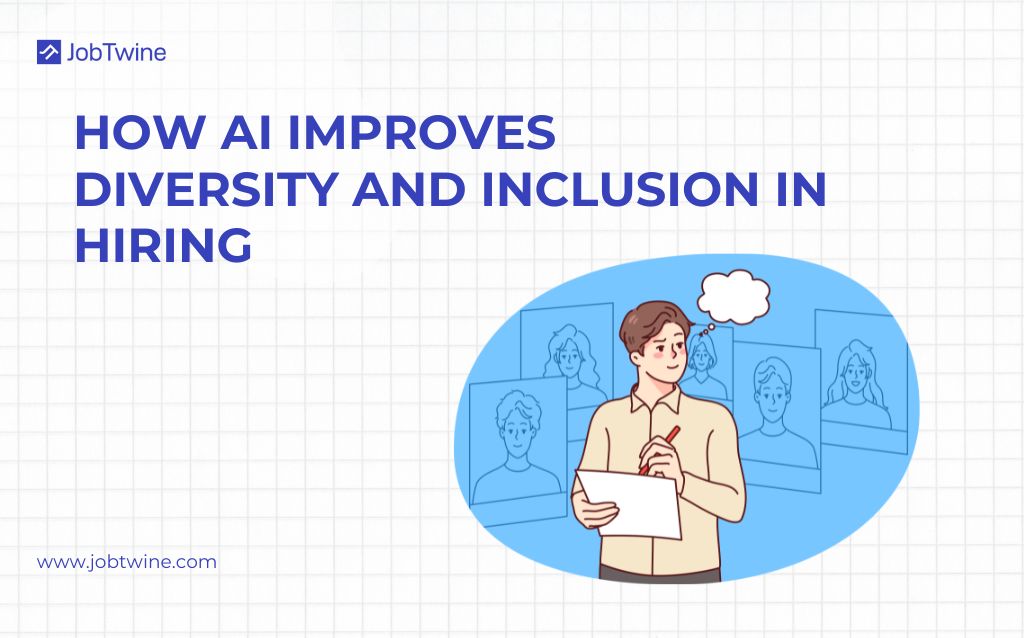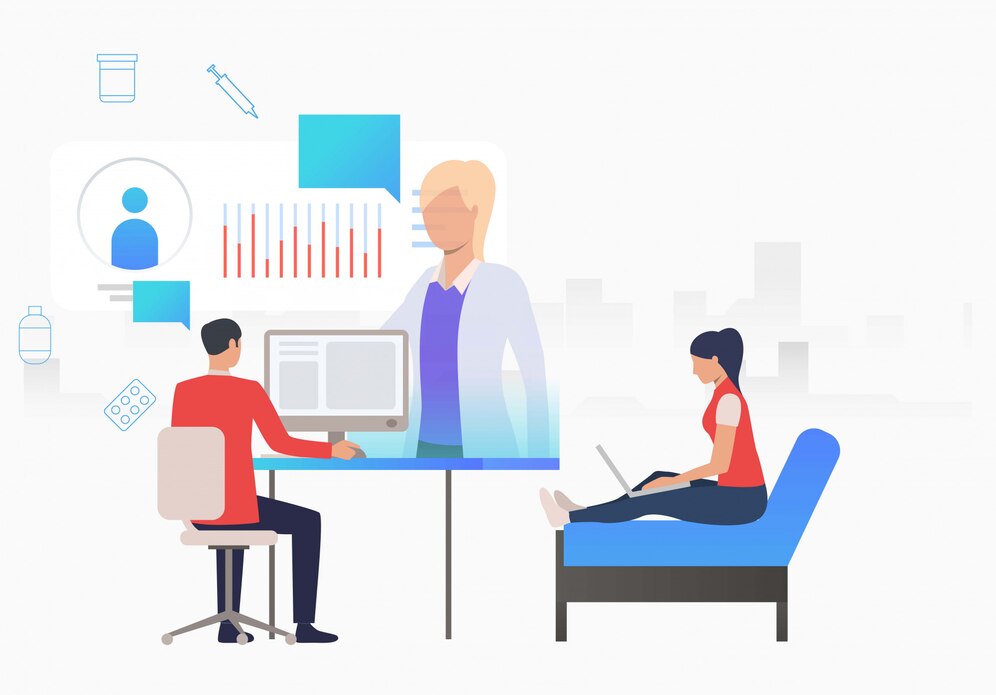How AI Improves Diversity and Inclusion in Hiring
In today’s dynamic talent market, creating a workforce that reflects diverse backgrounds, perspectives, and experiences isn’t just a “nice-to-have”. It’s a strategic imperative. Organizations that harness inclusive hiring practices are more innovative, resilient and profitable. Consider this: companies with above-average diversity are 35% more likely to outperform their industry peers.
AI interviewers are changing the game. From blind screening to structured video interviews, AI promises to level the playing field, if implemented thoughtfully. Let’s explore how AI can meaningfully improve diversity and inclusion (D&I) in hiring, and
1. Why D&I matters in hiring (and how AI fits in)
Diverse teams bring diverse ideas. A culture of inclusion encourages engagement, improves retention and enhances employee performance. Traditional human-led hiring processes, however, struggle with unconscious bias, inconsistent interview practices and unstructured evaluation. That’s where AI can add real value.
For example, AI can help ensure that evaluations focus on skills, behaviours and potential rather than demographics or similarity to prior hires. A recent analysis by researchers at University of Chicago Booth School of Business showed that algorithms designed with fairness and diversity constraints can guide organisations to interview a broader and more diverse candidate set with minimal cost.
2. How AI helps reduce bias and increase inclusion
Here are concrete ways AI and an advanced interview platform shift the D&I dial:
a) Blind and skills-based screening
AI tools can de-emphasise identifiers like name, gender, ethnicity, age or school and instead score on objective criteria—skills, competencies, responses. This moves selection from “who you are” to “what you can do”. For example, one article reports that organisations using AI-enabled screening saw up to a 50% increase in diverse hires.
b) Structured interviews and consistent evaluation
When every candidate is asked the same questions in the same way, bias is reduced. Using AI-driven interview intelligence allows for structured, repeatable formats. On the blog of JobTwine (“Fostering Diversity with AI-Powered Interview Intelligence”), you’ll find how interview consistency helps reduce the impact of interviewer idiosyncrasies.
c) Widening the talent-pool and reducing drop-offs
AI can help identify under-represented talent earlier, suggest inclusive sourcing strategies, analyse job-description language for bias, and monitor whether candidates from diverse backgrounds are dropping out at any stage. As noted by Pesto‘s blog on AI solutions for D&I: “AI extends the reach of recruitment efforts … ensuring a more comprehensive search.”
d) Data-driven insights & accountability
AI platforms generate analytics on candidate funnel, evaluation consistency, demographic representation, and bottlenecks. With transparency in these metrics, recruiters can make informed interventions rather than intuitive guesses.
e) Reducing “human-speed” errors
Humans get tired, distracted, influenced by “gut feel” or similarity bias. AI helps enforce discipline: same questions, same ratings, same process for every candidate. Over time this improves fairness and repeatability.
3. Where the pitfalls lie (and how to avoid them)
While the benefits are real, AI is not a panacea. Without careful design, AI tools may inadvertently embed bias or worsen exclusion. Key considerations:
Training data matters: If an AI system is trained on past hiring data from a company where the workforce lacked diversity, it may learn to replicate that bias.
Algorithmic design & constraints: Research shows that simply enforcing balanced shortlists doesn’t guarantee diverse hires if the algorithm simply mirrors the hiring managers’ biases.
Cultural & linguistic fairness: In global contexts (e.g., India, APAC) AI tools may perform poorly on accents, dialects, or non-US English usage. A recent Australian study warned of higher transcription error rates for non-native speakers.
Transparency & human oversight: Ethics demands AI decisions be explainable and auditable. Blind deployment risks legal and reputational consequences.
Best-practice checklist:
Audit your AI tools for fairness across gender, ethnicity, geography.
Use structured, consistent interviews, not free-form chats.
Train interviewing teams on inclusive mindset, even with AI.
Monitor metrics (drop-offs, pass-rates, evaluation scores) by demographic segments.
Ensure human-in-loop for final decisions.
4. How JobTwine’s platform drives inclusive hiring
At JobTwine we’re focused on bridging efficiency with fairness. As an advanced AI video interview platform, our solution empowers you to scale hiring without sacrificing quality or inclusion. Here’s how:
Our Interview Intelligence Platform uses machine learning and NLP to screen and score responses based on competencies and behaviours, not superficial cues.
Our system supports online interview platform workflows that ensure every candidate gets the same process: eliminating ad-hoc deviations that favour familiar profiles.
We enable hiring teams to build structured playbooks through our smart Interview playbook builder, embed inclusive questions, and track interviewer behaviour (e.g., speaking time, interruptions) to ensure equitable candidate treatment.
Through analytics dashboards, recruiters get clear visibility into diversity metrics across sourcing, screening, interviewing and offers.
With global support (ideal for GCCs and offshore tech hubs), our platform adapts to multilingual, multicultural talent pools, especially relevant for India and US hiring.
If you haven’t yet, you can explore how our platform works on our blog post “Role of AI in Reducing the Recruitment Bias”:
5. Action steps for forward-thinking recruitment teams
Here are actionable steps your TA team can take right now:
Review your interview process: Are questions consistent across all candidates? Are evaluation rubrics unbiased?
Evaluate your sourcing funnel: Do you have visibility on how many under-represented candidates apply, get to interview, and receive offers?
Pilot an AI video interview platform: Use a system like JobTwine’s to eliminate bias in screening and ensure process consistency.
Train your teams: Interviewer bias exists, train your interviewers in inclusive techniques and make them conscious of the AI’s role.
Monitor and iterate: Use data from your platform to identify drop-off points, imbalance in pass-rates, or disproportionality in offers. Adjust accordingly.
Communicate inclusively: Ensure your employer brand and job descriptions speak to diverse audiences. AI tools can help analyse and optimise language.
6. The future of inclusive hiring with AI
We live in a world of evolving standards, new regulations and global talent flows. As AI-driven recruiting becomes more prevalent:
Models will get more culturally aware and linguistically inclusive.
Explainability and audit-trails will become regulatory requirements, not nice extras.
AI will move from screening to mentoring and coaching: helping candidates from under-represented groups navigate the process.
Platforms like JobTwine will increasingly integrate candidate experience feedback to ensure that fairness is felt, not just measured.
The horizon is clear: when done right, AI can turn hiring from a gatekeeper into a gateway, opening doors rather than closing them.
Diversity and inclusion in hiring are no longer optional, they’re essential. And AI offers one of the most potent tools for transforming your hiring process into one that’s fair, efficient and inclusive. With a platform such as JobTwine’s AI video interview platform and interview intelligence platform, you can build an online interview platform that not only speeds up hiring but also brings candidates from all backgrounds into the fold.
By embracing AI with the right mindset, you and your team can move beyond “just hiring faster” to “hiring smarter and fairer”. The rewards are clear: better talent, more innovation, stronger culture and yes, better business outcomes.
Ready to see how JobTwine can help your recruitment function re-shape the future of work? Schedule a demo today



